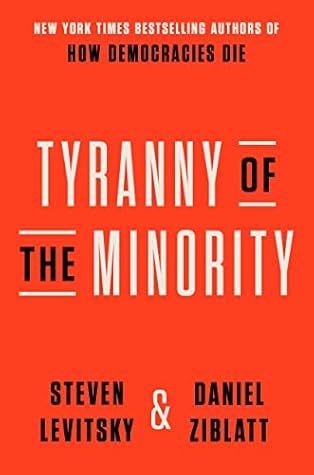More on this book
Community
Kindle Notes & Highlights
Finally, unlike every other established democracy, America did not introduce term limits or mandatory retirement ages for Supreme Court justices. Today, in the Supreme Court, judges effectively serve for life. It’s an entirely different story at the state level. Of the fifty U.S. states, forty-six imposed term limits on state supreme court justices during the nineteenth or twentieth century. Three others adopted mandatory retirement ages. Only Rhode Island maintains lifetime tenure for its supreme court justices. But among national democracies, America, like Rhode Island, stands alone.
The United States, once a democratic pioneer and model for other nations, has now become a democratic laggard. The endurance of our pre-democratic institutions as other democracies have dismantled theirs makes us a uniquely counter-majoritarian democracy at the dawn of the twenty-first century. Consider the following: America is the only presidential democracy in the world in which the president is elected via an Electoral College, rather than directly by voters. Only in America can a president be “elected against the majority expressed at the polls.” America is one of the few remaining
...more
This highlight has been truncated due to consecutive passage length restrictions.
As noted earlier, our Constitution is the hardest to amend in the democratic world. Among the thirty-one democracies examined by Donald Lutz in his comparative study of constitutional amendment processes, the United States stands at the top of the Index of Difficulty, exceeding the next-highest-scoring countries (Australia and Switzerland) by a wide margin. Not only do constitutional amendments require the approval of two-thirds majorities in both the House and the Senate, but they must be ratified by three-quarters of the states. For this reason, the United States has one of the lowest rates
...more
Acute crises call for extraordinary cooperation; leaders of rival parties realized they needed to temporarily set aside their policy goals and forge a common pro-democratic front, both at election time and while governing. In Finland in the early 1930s, the leftist Social Democrats joined center and center-right parties in a broad-based Legality Front to face down the fascist Lapua Movement. In Belgium, the center-left Labor Party joined forces with the conservative Catholic Party and the centrist Liberals in a right-leaning unity government to defeat the fascist Rexist Party. In both cases,
...more
Militant democracy may at first glance seem at odds with America’s libertarian tradition, but the U.S. Constitution also possesses tools for combating antidemocratic extremism. As constitutional scholars remind us, Section 3 of the Fourteenth Amendment was adopted to explicitly prohibit “insurrectionists” from holding public office in the aftermath of the Civil War. Although it has rarely been used for this purpose, the Fourteenth Amendment offers a powerful tool to defend democracy from domestic enemies.
In most democracies, this is not an issue. In a democracy, people are supposed to vote. So most democratic societies grant citizens a constitutional (or at least statutory) right to vote, and government authorities make it as easy as possible for people to vote. In some countries (Australia, Belgium, Brazil, Costa Rica, Uruguay), voting is obligatory; it is considered a civic duty, like paying taxes. In nearly all democracies, voter registration is automatic. Once citizens turn eighteen, their names are added to the rolls. And voting is made simple. Nearly all democracies in Europe and Latin
...more
Even if many of our proposals are unlikely to be adopted in the near term, it is essential that ideas for constitutional reform become part of a larger national political debate. The most powerful weapon against change is silence. When an idea is viewed in mainstream circles as impossible, when politicians never mention it, when newspaper editors ignore it, when teachers don’t bring it up in class, when scholars stop talking about it for fear of being seen as naive or out of touch—in short, when an ambitious idea is “unthinkable”—the battle is lost. Non-reform becomes a self-fulfilling
...more
John Roberts, later chief justice of the Supreme Court, recognized this when he championed judicial term limits in 1983, when he was working in the Office of White House Counsel under President Ronald Reagan: The framers adopted life tenure at a time when people simply did not live as long as they do now. A judge insulated from the normal currents of life for twenty-five or thirty years was a rarity then, but it is becoming commonplace today. Setting a term of, say, fifteen years would ensure that federal judges would not lose all touch with reality through decades of ivory tower existence.
What is needed today, then, is not only a democratic reform agenda but a democratic reform movement capable of mobilizing diverse citizens in a sustained nationwide campaign to ignite imaginations and change the terms of public debate.


